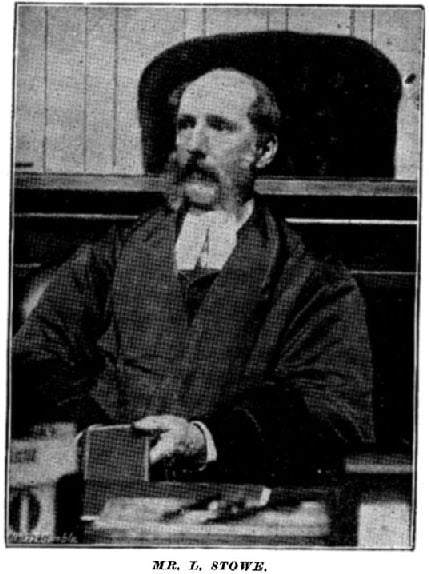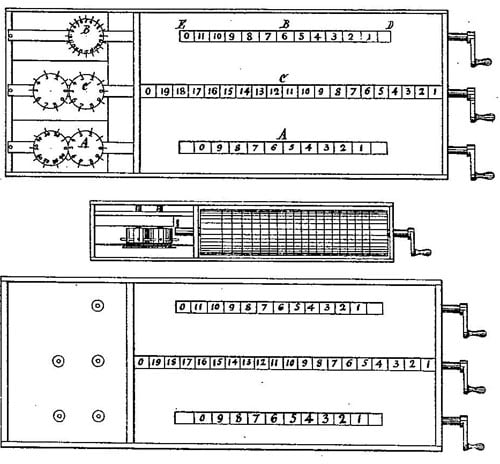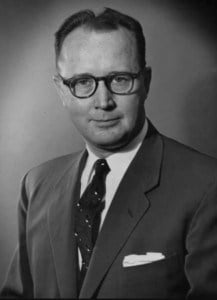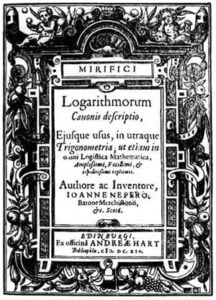Born in southeast England, Leonard Stowe set off to New Zealand when he was just 21 years old. There, he landed a coveted position as the secretary to Thomas Carter, the third Superintendent of the province of Marlborough. He quickly established himself as a prominent figure in politics. For over 30 years, Stowe served as a key member of New Zealand’s Parliament. In addition to his life in politics, Stowe was also an inventor. In 1880, he received a patent for his calculating machine, which was exhibited at the prestigious Melbourne International Exhibition of 1881.

Leonard Stowe
In the late 1870s, the government clerk from Wellington, New Zealand, Leonard Stowe (see the biography of Leonard Stowe) devised an adding machine, which he patented in 1880 in Great Britain and Germany (patent Nr. DE11907). The English patent for Stowe’s Patent Calculating Machine (see the lower patent drawing) was assigned to Stowe Brothers, London.
A working model of the machine was exhibited at the International Exhibition of 1881 in Australia, and there it happened to receive an honorable mention for its design and operation.

The machine of Stowe consists of a number of cylinders, or rollers, with figures printed thereon, zero or naught being represented by a red square. To the left of the cylinders are a number of indicators, each of which records every perfect revolution of its corresponding cylinder.
To place the machine ready for work the indicators must be turned until zero or naught is visible; and the cylinders must be turned so that the zero on the extreme left i.e., nearest to the indicators is visible.
Let’s see an example
To add the following figures:
Turn the cylinder towards you till 4 appears in the first column at the left end—stop, start again from the Zero or Red Square, now visible till you come to 5 in that column; start again from the Zero or Red Square, now visible, till you come to 7 in that column; start again from the Zero or Red Square, now visible, till you come to 3 in that column; start again from, the Zero or Red Square, now visible, till you come to 4 in that column.
On looking at the indicator you will find figure 2 recorded, and figure 3 will be the figure now visible at the left end of the cylinder, the two together making 23 which is the required total.
Note: The result of any addition will always be found by reading the figures recorded on the indicators together with the first figure on the left end of the cylinders.

The image featured at the top of this post is ©Unknown author / public domain


